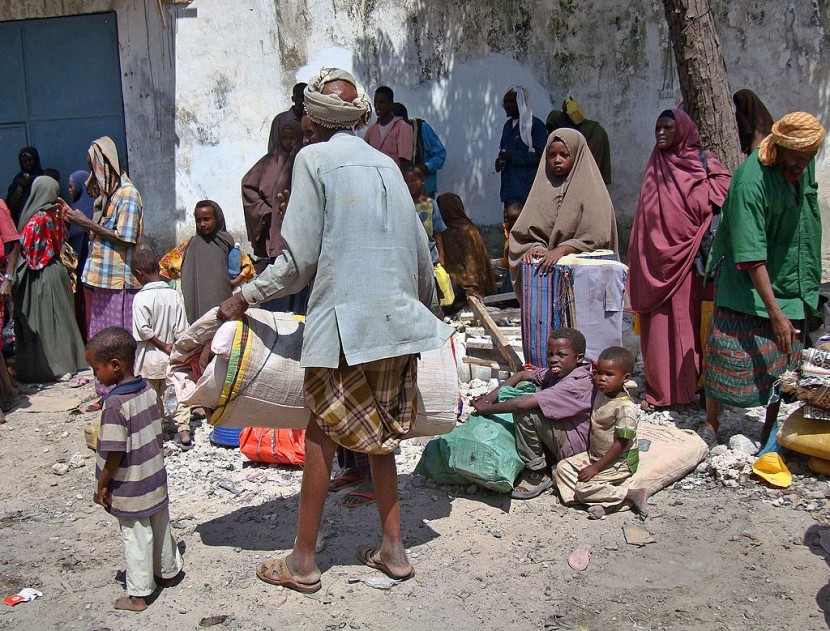
To help more than 22 million people in Afghanistan, the World Food Program (WFP) will have to expand its supply. A large number of people may experience severe hunger and widespread famine if the weather turns out to be as awful as experts expect this winter.
The weather has changed dramatically from early fall warmth to a severe chill. Drought has been recorded in various locations, heightening the sense of approaching doom, and the country is now experiencing "hell on earth."
Qatar helps Afghanistan amid severe hunger
The World Health Organization (WHO) transported roughly seven metric tonnes of life-saving medications and supplies to Afghanistan with the help of Qatar. An aircraft carrying around seven metric tons of life-saving medications and supplies arrived in Kabul on November 4, according to the WHO.
The global agency worked with Qatar Airways' operations and logistics staff, as well as the Qatari government, to deliver the supply, Republic World reported. Dr. Mutlaq AlQahtani, Qatar's Special Envoy for Counter-Terrorism and Conflict Resolution Mediation, encouraged the international community to continue assisting Afghanistan.
In light of the development of new COVID-19 variants and the upcoming winter season, AlQahtani highlighted the significance of delivering help to Afghanistan. Qatar continues to support the war-torn country in enabling supply airlifts, according to Dr. Mutlaq AlQahtani.
Before the Taliban seized control in Afghanistan in August, there was hope that President Ashraf Ghani's government would be able to deal with the danger of a hard winter with the help of the international community.
That support vanished when Ghani's administration came apart. Western countries have cut off help to the country because they don't want to be associated with a dictatorship that forbids females from attending school and favors reinstating the full range of Sharia penalties.
In Afghanistan, many poor people are living in a nation that has been devastated by more than two decades of conflict. When the Taliban retook power in August, thousands of people fled the country, and many more attempted but failed to flee.
Afghan children are most affected by famine
Many of those who have stayed have been evicted from their houses and are now living in deplorable conditions around the country. Some Afghans are living in camps, where they are squatting in worn-out tents and using clothing that isn't thick enough to keep them warm in the freezing winter conditions.
Others are unable to heat their houses due to a lack of gasoline. Hundreds of people are reportedly queuing for hours to receive flour at World Food Programme distribution locations, which are controlled by Taliban troops who turn away those who are not qualified for supplies, according to BBC News.
Several droughts in the nation have resulted in fewer harvests, and clean water pipelines also freeze during the winter months. Fatema, a single mother with seven children who live in a cave in Bamiyan, central Afghanistan, says she is "frightened."
Per SCMP, Guldana, a two-and-a-half-year-old girl at Kabul's main children's hospital, is sitting up on her bed, but she is too weary even to open her eyes. Only her thin face can be seen since her little body is covered in a blanket.
She is one of a rising number of children taken to the Indira Gandhi Children's Hospital in Kabul daily. Hunger is on the rise in Afghanistan, fueled by an economic catastrophe that has only gotten worse since the Taliban seized power over three months ago.
Jinnat Gul, Guldana's father, stated he couldn't afford to feed her and his other five children. He used to travel from home to house, gathering and selling junk items. However, the business has dried up for the past three months, and he has barely made any money.
According to the World Food Program, the number of Afghans living in near-famine circumstances has grown to 8.7 million, up 3 million from earlier this year. In Afghanistan, about 24 million people suffer from acute hunger or 60% of the population. By the end of the year, an estimated 3.2 million children under the age of five are likely to be malnourished.
Related Article: Senior Taliban Commander Among Killed in Kabul Hospital Attack; Incident Undermines New Regime's Security Pledges
© 2026 HNGN, All rights reserved. Do not reproduce without permission.








